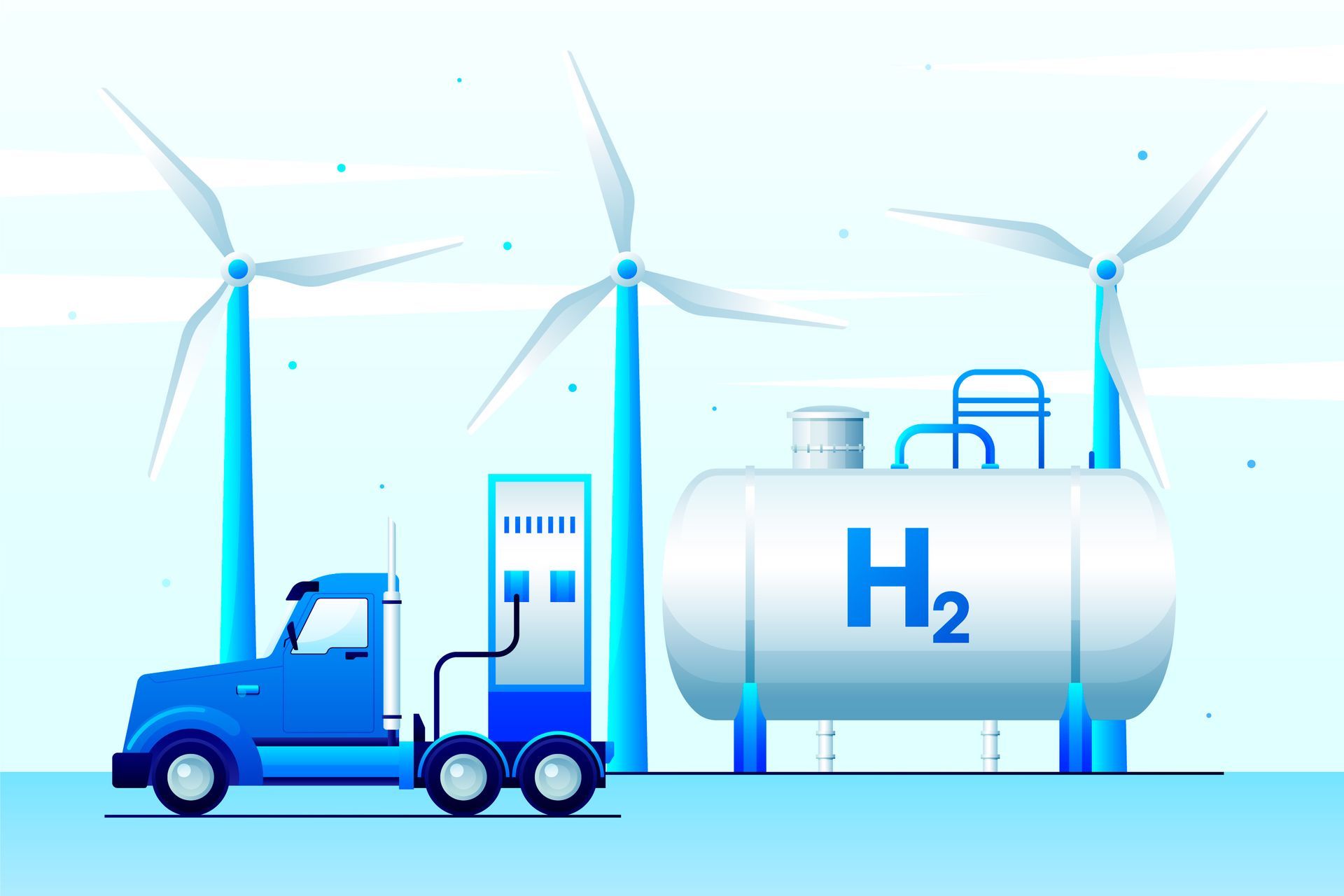5 trends in STEM education you need to know
Author: Emily Newton
Summary:
STEM education has had many developments since it first came into schools. Here are five new trends you could see in a school or home near you.
STEM education has always been vital, but perhaps now is the time when it’s more important than ever. Society is advancing toward the age of robotics, artificial intelligence and interconnected machines making daily life easier. For all those advancements, the industry will need a host of eager minds ready to create and utilise them.
Teaching kids about science, technology, engineering and mathematics is a crucial part of their education and potential careers. It helps them learn useful life skills and encourages them to be part of the future. Here are five trends in STEM you need to know so you can see how today’s children are becoming tomorrow’s scientists, engineers and manufacturers.
1. More Interest in Robotics Competitions
FIRST Robotics came about in the late ‘80s and has taught students about building robots and solving problems ever since. Teams have done incredible things, such as saving animals, making wheelchairs for community members and even easing the pressures of the COVID-19 pandemic. FIRST participants helped create ventilators, personal protective equipment and robots to deliver groceries to ageing adults.
Right now, the competitions are massive — FIRST expects to have over 55,000 high school kids participating in the event. This organisation even involves younger children, as students from 4-6 can get in on the fun with LEGOs. The popularity of such programmes is teaching more kids about robotics, teamwork and professionalism, fostering a new generation of creators.
2. STEAM Instead of STEM
For too long, people have viewed science and art as too different and unable to mix. However, creative subjects like music and visual art can help students become more rounded and better problem-solvers. Major STEM fields highly value such traits, so schools have begun advocating for a mixed programme starting around 2020.
Incorporating art into STEM education can give children the flexibility their minds need to excel in numbers-oriented subjects. They may not seem helpful for creating medicines or building computers, but classes in English and drama teach kids how to think outside the box. It introduces a not-so-objective style of thinking into the classroom, showing them ways to creatively solve problems and create an adaptive curriculum. More schools are implementing STEAM instead of strictly STEM for such reasons.
3. Early STEM Education
When you think of STEM learning, you probably don’t think of small children learning to code or build circuits — but that’s precisely what some professionals are advocating for. Birth to 5 years old is one of the most critical times in brain development. One expert even states that 85%-90% of the brain forms during these years.
This is why some people want to begin STEM education before age 6 to maximise the amount of information kids can accrue. Introducing more STEM-focused topics early on could develop greater interest in these subjects because there is such an incredible opportunity for learning before 5 years old. Preschoolers likely won’t be doing advanced experiments, but they could investigate why certain building-block structures are sturdier than others.
4. STEM Toys
Along with introducing STEM at a young age, some toys can help kids learn these concepts without realising what they’re doing. These can help children express their curiosity without feeling like their parents are forcing them to do something educational. Adults can encourage familiarity with STEM topics while kids are gaining knowledge and independence.
Toys are perhaps one of the most significant trends in STEM education. The market for these fun learning products could reach over $9 billion by 2025 — 1.5 times growth from 2019. Analysts also expect the market to grow by 7% each year, meaning more parents and teachers will buy STEM toys to start teaching their kids early. Such growth could mean more future coders, biologists or aerospace engineers.
5. Increased Digital Learning
The COVID-19 pandemic made it necessary for many students to attend school remotely. Many are transitioning from this, but that may not be the best choice for STEM education. About 59% of Generation Z kids say they prefer learning on YouTube, and 47% enjoy interactive apps and games.
One significant advantage of online learning is that the information is up to date, which is critical for science-based subjects. Additionally, schools are less likely to invest in new books frequently because of their high prices. For these reasons, STEM teachers may find greater success by using more digital forms of education.
Encouraging STEM Education in the Younger Generations
Learning about science, technology, engineering and mathematics is essential for today’s students. If the world hopes to keep its forward progress, it will need more scientific minds to develop and build its robots, devices and machine-learning programmes. These five trends in STEM education show how schools and parents foster a love for these subjects in their children’s lives.
More articles!

By EuroScientist Editor
•
07 Sep, 2023
Hydrogen fuel can be made from wood waste in a clean and cost-efficient way at heat and power plants – and its developers hope it could change the narrative around this sometimes-controversial solution. By Steve Gillman & Fintan Burke The costs of scaling up hydrogen power, along with the potential amount of energy and natural resources to produce it, have seen this fuel source face increased scrutiny as a solution against climate change. “The majority of our electricity and hydrogen is produced from fossil fuels. This, of course, is not sustainable as it contributes to climate change,” said Michael Bartlett, a founder of Phoenix Biopower, a company that turns natural waste into combustible gas, like hydrogen. As part of a research project called Bio-FlexGen, Bartlett is developing ‘green hydrogen’ from biomass waste from the forestry sector. “Our ultimate goal is to provide a secure, renewable and low-cost energy for society and industry,” he adds. Bio-FlexGen, and its multidisciplinary team of 14 partners from five EU countries, aim to provide the technology for combined heat and power plants (CHP) that can also generate a supply of green hydrogen in addition to usual outputs of electricity and heat. To make green hydrogen, Bio-FlexGen will use a combination of two main technologies – a gas turbine and a gasifier. First, waste biomass is added in a gasifier at pressure and heated up to 850 Celsius – a temperature so hot that it releases other gases, mainly hydrogen, methane, and carbon monoxide. The next step sees water and steam added to cool before it passes through a cleaning filter. “Once we have cleaned up the gases from the gasifier, we can either send it to the gas turbine for combustion and electricity generation or to a hydrogen production unit,” said Bartlett, adding that this process gives “enormous power” and efficiency to the CHP plant. The high temperatures of this process, over 1400 Celsius in the gas turbine combustor, also result in greater power generation. To ensure a high efficiency, the system is designed to gather waste heat and recycle it back into the gas turbine in the form of hot steam. This, Bartlett says, can result in double the electricity output that is typical for a given amount of biomass. The new approach means the CHP plant then has three modes of operation; 1/ produce heat and electricity efficiently from biomass in the winter 2/, produce green hydrogen and biogenic CO2 from biomass in the summer 3/ utilise hydrogen in the gas turbine for peak power. This flexibility means it can help keep costs low and stable and complements the hourly, weekly and seasonal variability of solar and wind power. Converting critics and pushing EU hydrogen plans ahead Bio-FlexGen’s systematic approach to incorporating green hydrogen could go a long way in negating the main arguments against this renewable energy, primarily the amount of natural resources it requires for its production. According to Rystad Energy, 620 million cubic meters of water are needed to produce 85% of the green hydrogen capacity planned for 2040. However, environmental groups like Greenpeace argue that renewable power alone is not enough to produce the needed amount of green hydrogen. If anything, they claim this may end up increasing fossil fuel demand. But Bio-FlexGen’s green hydrogen production utilises oxygen to drive the gasification process, itself a by-product of green hydrogen production from wind and solar power. “The main advantage of getting hydrogen from biomass compared to wind or solar is that it has less variability and is not dependent on electricity price,” said Bartlett. “It also requires less H2 storage (you store biomass instead) for when the wind doesn't blow.” When producing electricity from biomass in the CHP plant, a lot of steam is needed in the gas turbine for the best effect. In fact, 50% of the exhaust is just water vapour. This water is recovered, treated and recycled back to this process, and an excess of clean water can even be produced for other consumers. When this water is recovered, it also generates large amounts of heat, which the project can use further in district heating networks or other processes. In this way all the energy in the biomass is efficiently used. “We are working very hard to ensure that we are part of a circular biomass utilisation and that we are using hydrogen in the safest possible way,” explains Bartlett, adding that the project will make a “significant contribution to the decarbonisation of the energy system”. The first commercial plant using Bio-FlexGen’s approach is planned for 2030, in which the power plant will operate on biomass in the winter months and use 100% green hydrogen in the summer months, therefore displacing demand for fossil fuels in peak periods – a goal increasingly shared by EU policymakers. Following the war in Ukraine, and the embargo on Russian oil imports into the EU, the European Commission outlined a ‘Hydrogen Accelerator' concept to scale up renewable hydrogen deployment. This ‘REPowerEU Plan’ wants the EU to produce 10 million tonnes of renewable hydrogen by 2030, with the Commission recently proposing criteria that Member States can follow to ensure they produce green hydrogen, including that it only be produced when and where sufficient renewable energy is available. As BioFlexGen’s power plant will operate with up to 100% green hydrogen from solar and wind, with an optimised combination of bioenergy, it is already on course to meet these criteria. Bartlett also believes that the project has brought together “amazing, competent people” that can play a key role in developing green hydrogen further.

By EuroScientist Editor
•
07 Sep, 2023
Author: Jane Marsh Scientists are researching a theory known as positive climate tipping points. While most people talking about tipping points concentrate on their negative consequences, such as irreparable harm to ecosystems, positive tipping points provide a ray of hope. These points may result in favorable and constructive changes to our planet's climate system as the effects of climate change continue. Learn more about the idea of positive climate tipping points, consider their possible advantages and discuss their significance in understanding and tackling the problems caused by climate change. Understanding Tipping Points To fully understand positive climate tipping points, it is essential first to understand what tipping points are. Tipping points are key thresholds in a complex system where a minor change can cause significant and sometimes irreversible changes in the system's behavior. Harmful climate change tipping points may be the first type that comes to mind. These relate to occurrences like the melting of significant ice sheets or the disruption of essential ocean currents, which can have quick and harmful repercussions. However, there are also positive tipping points that may shape the future climate. Positive Climate Tipping Points Unlike negative climate tipping points, positive ones can increase ecosystem resilience and bring about encouraging changes. These turning points take place when certain environmental activities or changes trigger self-reinforcing mechanisms that improve the earth's capacity to absorb carbon dioxide, lower greenhouse gas emissions or support the preservation of vital habitats. Forest preservation and restoration is one illustration of a favorable climate tipping point. As forests grow and recover, they sequester a greater amount of carbon dioxide, which lowers the levels of greenhouse gases in the atmosphere. This process creates a positive feedback loop that encourages greater forest development and improves the ability of these ecosystems to control the temperature. Relevance and Implications of Positive Tipping Points Positive climatic tipping points must be recognized and utilized for mitigation and adaptation initiatives to succeed. Scientists and decision-makers can create targeted interventions to improve the planet's resilience and lessen the effects of climate change by identifying and utilizing these tipping points. Climate tipping points can also encourage and inspire group action. They provide concrete instances of how individual and group activities, such as reforestation programs, sustainable land management techniques and ecosystem restoration projects, can significantly contribute to the fight against climate change. The general public may take inspiration in carrying out sustainable behaviors or supporting laws that help effect positive change. Emphasizing these positive tipping points' potential advantages and ripple effects encourages individuals at all levels. While positive climate tipping points have great potential, it is important to recognize that our understanding of them is still developing. Further research is necessary. These tipping points require identification, monitoring and measurement, which demands continual study and scientific cooperation. Scientists use advanced modeling approaches and thorough data analysis to find potential positive tipping points across different ecosystems. Researchers are also looking into how positive and negative tipping points are connected. Scientists can create comprehensive plans to negotiate the intricacies of climate change and maximize beneficial results by thoroughly comprehending the relationships between these tipping points. Positive Climate Tipping Points Could Be a Game-Changer Positive climate tipping points demonstrate optimism in the fight against climate change. If people locate and utilize these tipping points, we may be able to develop self-reinforcing mechanisms that positively affect our planet's climate system. Scientists, decision-makers and people can take proactive measures in climate change prevention and adaptation by comprehending the significance of positive tipping points and their potential ramifications. The complexity of positive climate tipping points must be further understood through ongoing research and monitoring projects to successfully navigate the challenges of climate change and create a more resilient and sustainable future.

By EuroScientist Editor
•
18 Jul, 2023
It’s no secret that the planet is getting warmer, but July 2023 saw record-high temperatures that really turned heads. 2023 is an El Niño year — in addition to human-caused climate change, the Earth is undergoing an expected cycle of exceptionally warm weather that occurs every few years.
This double whammy has many people reaching for their water bottles and cranking up the AC. Why are scientists so worried about the heat?

By EuroScientist Editor
•
03 Jul, 2023
Hydrogen fuel cells have garnered a lot of attention recently. As the global conversation shifts to emissions-free energy, many people want to know how fuel cells work, whether they could replace internal combustion engines someday and if they can power homes. Here are answers to common questions about the technology.



